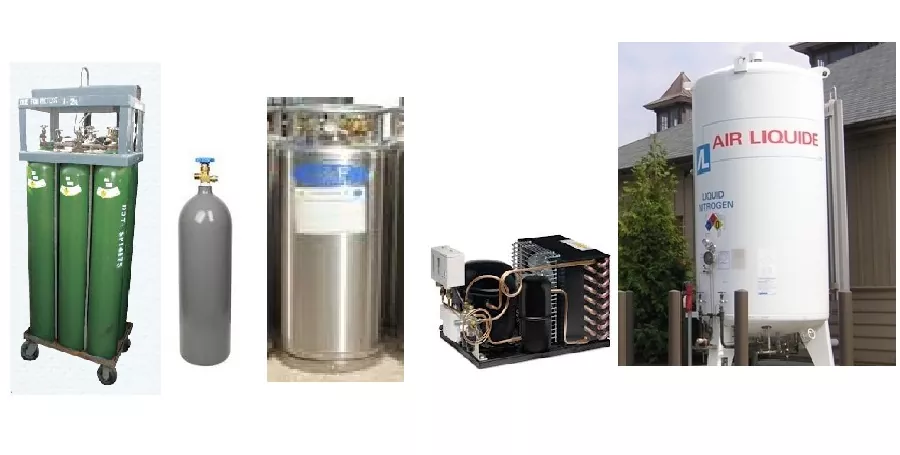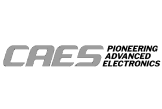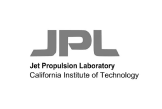Temperature Testing – Which Cooling Method is best?

Comparison of cooling methods for Environmental Temperature Testing of Electronics
Many electronic components and systems require thermal cycling equipment in manufacturing or the laboratory for system test, burn-in, or design validation.
While improvements in heat pump design allow compressors to heat as well, in most cases resistance heating is the heating method of choice, this is a discussion of cooling options. For cooling methods, there are several choices.
Three primary ways that things are currently being cooled in the lab are:
- Mechanical refrigeration i.e. compressor,
- Expendable coolants such as LN2 or CO2,
- Thermoelectric cooling. Peltier chiller
The following is a brief study of the choice process for deciding which coolant to use. The strengths and weaknesses of the 3 different cooling methods are outlined below:
When choosing the best system for your requirements, there are a few concerns right away that will guide the process
- Cooling capacity: Production environments often thrive on productivity with faster performance. How fast do you need to transition? Do you have a physically large, massive or active load? How cold are you going?
- Facilities: Do you have expendable coolant readily available? Does the system have to be portable to an area where the coolant is not available or inconvenient? Is ventilation very limited at the point of use? Is the quantity of heat large enough to be concerned about building heat load?
- Does the testing run unattended?
- Initial cost v. long-term cost study.
Mechanical Refrigeration
Strengths:
The only resource expended is electricity.
Systems are self-contained, just add electricity.
A variety of industry-standard refrigeration systems or custom designs are available.
Weaknesses:
High initial cost, higher yet if cooling below -40 C is required.
Systems are bulky – More difficult to transport, larger capacity systems require special power.
The larger the capacity, the larger the load on HVAC systems or heating of ambient air
Noisy
Relatively slow cooling speed
They are complex systems with more potential issues, leaks, etc.
Expendable Coolants
Strengths:
Economies of speed due to higher cooling capacities.
Lower initial cost, Simpler design, fewer components with fewer failure modes.
Lower temperatures are possible.
Weaknesses:
The ongoing need to supply expendable coolant.
Storing, supplying, and delivering cryogenic fluids can be expensive or otherwise challenging.
Some risks and increased costs are due to ultra-low temperatures in expendable coolant systems.
Thermoelectric
Strengths:
The Simplest designs are Possible, some systems have no moving parts.
No refrigerants, high-pressure gases, or pumps can cause hazards from pressurized leaks.
The reversible, often same system can both heat and cool.
Good reliability.
Weaknesses
Relatively low cooling capacity and narrow range of operation is typical, generally slow cooling.
Lowest efficiency
Relatively high initial cost.
The Details
Mechanical Refrigeration
There are some promising new technologies available for refrigeration systems which I am not here to summarily dismiss but at the present, the hermetic reciprocating (piston with reed valve) and scroll compressors are generally what is available and widely used. Scroll compressors are a newer technology than reciprocating compressors and are very different inside but generally perform the same or a little better than reciprocating compressors in several areas. Size, noise and vibration, efficiency, cost, and reliability. As time progresses, more scroll compressor systems become available. Generally larger systems are making their appearances first then the smaller units follow later. Refrigeration compressors can use a sizable amount of electrical power. This power is ultimately turned into heat, thus depending on the system capacity, unless a water-cooled configuration is used, will end up being a sizable load on room HVAC systems. One must always be cautious that the refrigeration system has ample ability to discharge the required heat capacity to keep the system operating properly.
Depending on the ultimate temperatures to be reached, a single-stage or cascade dual-stage system is called for. Single-stage compressor system performance flattens out around -35C and ultimately can only cool too -40C in most cases. A two-stage cascade refrigeration system can cool down to the ultimate low temperature of -70C, in some cases a little colder. Cascade refrigeration systems are substantially more complex and costly than single-stage systems. Most modern designs have been refined to the point of good reliability but there are many more parameters that must stay in balance for the system to perform and stay intact.
Three-stage refrigeration systems are not very common in practice but in theory not much more complicated than two-stage systems. These systems should be considered when expecting to cool to temperatures below -75C without Liquid Nitrogen.
Some companies can achieve ultra-low temperatures by combining more than one refrigerant in one compressor. There are some trade off’s involved but these systems generally work well although there is generally lower cooling capacity.
Expendable Coolants
Liquid Nitrogen
Liquid Nitrogen, (L-N2 orLN2) is readily available and widely appreciated for its tremendous cooling capacity. It is available in vacuum insulated somewhat portable tanks (often known as dewars, typically 170 liters) or a large outdoor tank with vacuum jacketed plumbing to the points of use. The use of LN2 allows for easily controlled, nearly unlimited cooling capacity. The downside of LN2 is due to the extreme cold temperatures it is often difficult to handle or lossy due to the heat encroachment from the large differential to ambient temperature. Nevertheless better cost efficiencies can be achieved when you also consider the time saved by the ability to speed up the cooling process. For example in a production environment, waiting for the system to cool down can have a cumulative impact on production capacity. Also note, LN2 in a tank will warm up and vaporize eventually wasting some of the coolants if it is not used within a few weeks. A properly designed distribution system will always have LN2 ready to use.
There are exceptions but generally, distribution systems run around 20 psi. and portable tanks can easily be acquired with pressure ranges 75-120 psi or higher. Higher pressure is recommended when possible due to the shorter latency in waiting for coolant to “cool down the hose” so that liquid is actually coming out the delivery point. Typically a temperature chamber or thermal platform (cold plate AKA hot/cold plates) designed to cool with LN2 will be designed with a coolant orifice of appropriate size to control the flow rate for the specified pressure available. If you need to cool down to very low temperatures or fast, there is little that compares to LN2. Practical systems can often have the capability of cooling down below -150C but in many cases, the ultimate low temperature is limited to -100C because not many other materials are good for those extreme temperatures. Due to the extreme temperature, customers that run systems unattended, cooling with LN2 often specify a redundant safety cooling system shutdown.
Liquid CO2
L-CO2 (Liquid) is often a little cheaper than LN2 but has a more limited lower temperature range of -60C to -65C.
CO2 is available in three basic forms for the lab.
- High-pressure Syphon tanks, similar to what you might see in a welding shop. These tanks have a dip tube that takes liquid off the bottom of the tank. The CO2 is stored at room temperature in these high-pressure tanks so the coolant stores indefinitely. This is a good choice if your cooling needs are intermittent or otherwise not extreme. -60C is about the coldest achievable with high pressure CO2
- Low-pressure CO2 tanks, similar looking to portable LN2 tanks are pressurized to up to 300 psi and the contents are around -20C in the tank so there are fewer losses than with an LN2 tank which is typical -180C inside.
- Distribution systems for supplying CO2 about the facility often distribute the CO2 in gaseous form, condensing, storing, and chilling the coolant at the point of use with a refrigeration compressor. This makes the distribution plumbing system far cheaper than the vacuum jacketed plumbing required for an LN2distribution system
Low-pressure CO2 is more efficient than high pressure CO2.for larger scale regular usage low-pressure CO2 with a satellite distribution system can provide the best cooling economy. There are some trade off’s with each that can be calculated but one other consideration for CO2, especially as delivered from a distribution system is the triple point of this refrigerant. Plumbing systems including inside the thermal test equipment must be designed to not allow the triple point of the coolant to be reached as the coolant in the plumbing can easily turn solid and block up with dry ice. The easiest way to think of this is when the coolant is very cold, never allow the plumbing path to increase in cross-section and subsequently restrict again as this pressure drop can cause the CO2 to turn solid, blocking delivery. This can also happen due to water or other contamination in the system.
Thermoelectric cooling
Thermoelectric cooling products, like many technical products, have experienced minor improvements in reliability cost, and efficiency over the years, however for systems of substantial capacity, they remain more expensive and less efficient than compressor-based systems. The bigger advantages of thermoelectric cooling remain the simplicity of the design and the lacking of the requirement for any pressurized gases oils or refrigerants. Not to dismiss thermoelectric cooling as a viable method for cold testing but the lower heat removal capacity and limited temperature range limits many of their applications. One of the biggest benefits would be most particularly where a cooling module needs to be easily unhooked and hooked up again, the lack pressurized of refrigerant lines, in this case, can be a big benefit. Thermoelectric cooling system temperature ranges are typically from -10C to +70C. Additionally, the fact that it is basically a reversible heat pump can also greatly simplify system designs.
So, to sum it up, if your process can benefit from speed or the capacity is large and LN2 cooling is an option for you, LN2 cooled systems are the best.
If cooling use is only intermittent then often high-pressure CO2 is the best choice.
If the ultimate cold temperatures needed are -55 or above, low-pressure CO2 may be the best choice for its slightly lower cost than LN2 and greater efficiency than high pressure CO2
If LN2 is not readily available for the application or slower transition rates do not impact productivity, refrigeration compressors are often the best choice. For smaller capacity systems, they can often plug directly into normal lab power outlets. Cascade refrigeration systems that are capable of going to temperatures from -40C to -75C are occasionally available for operation on 120v 15 A. power but usually require 230v service or at least a full 20 or 30 A. at 120v. Larger systems with dedicated power of course require more power.
For configurations where the cooling power requirement is fairly small and temperatures will not be required below -10C, thermoelectric systems often provide a favorable solution. This is especially so of the cooling module is expected to be unhooked and rehooked more than one or two times.
Environmental Issues
As we all see increasing concern for the environment, this deserves some comment.
Since the air, we breathe is about 78% Nitrogen, adding or removing Nitrogen from the environment is generally not a problem. However, there really is a limit to the concentration of Nitrogen in breathable air. If the ventilation in the room is limited, Nitrogen can eventually displace the Oxygen required for breathing below 20%. Oxygen concentration below 20% is some cause for concern, below 15% is a good reason to evacuate. If there is ever a question of adequate Oxygen, there are relatively affordable Oxygen monitors that can make an alert if the oxygen in the room is too low.
For CO2, the issue is about the same for Oxygen displacement, there is one small advantage that Carbon Dioxide has a mild scent that can be detected at levels lower than might represent a hazard to humans or other life. The same smell that you might detect from beer or carbonated soda. LN2 on the other hand is odorless.
CO2 has gotten a bad name as a greenhouse gas. There is however not a valid concern about this. Because the CO2 used for cooling has been captured from the atmosphere for this purpose and is simply being returned to where it came from when it is used.
Mechanical refrigeration systems can suffer leaks resulting in the accidental release of greenhouse gasses. Generally, the amount of refrigerant in a small system is not significant in the bigger picture but may represent a long-term concern. The refrigerants used in modern systems pose little or no direct health risk should contact or inhalation occur.
There are no known concerns of environmental hazards with the use of thermoelectric cooling systems.
Call us to talk about your thermal testing requirements.





















